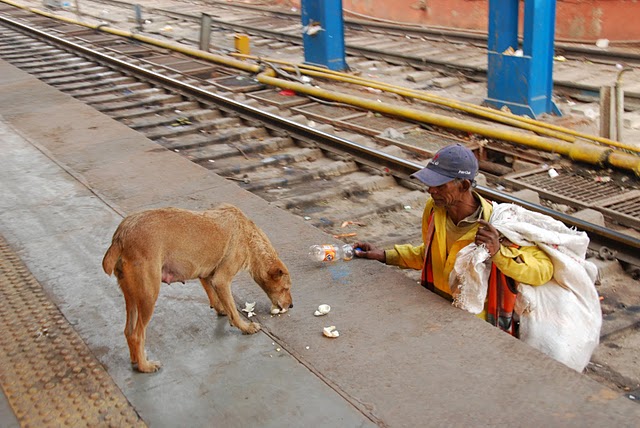�Stray-Free� Vs �Stray-Friendly�
| Tweet |
Recently, a lot of people forwarded a petition to us urging us to sign it. It was lobbying for a “stray-free” community. Many rescuers and animal caregivers signed it but I did wonder if they knew what they were signing for.
A “stray-free” community would mean the continuous capturing of stray animals. Is this what animal caregivers want?
Just as in bank documents and legal letters, it is really, really important to read what one is signing.
I think about two years back, a well-established animal welfare organisation started a petition asking for humane capturing and euthanising of strays. We didn’t sign that nor allow our logo to be used because in the first place, we don’t even agree that strays should be captured, what more, euthanised. Our logo was put without our consent, and I politely requested it to be removed.
And while writing this, I am well aware that the term “stray” is derogatory, hence, we always use the term “street animals” instead of “strays”. But terminology aside, we don’t support a “stray-free” community if it means that the street animals will continuously be captured. How can any environment be “stray-free”? Where are the strays going to go to? Which shelter or sanctuary isn’t full? How many sanctuaries can we build? How many rescues can we rehome? How many can we adopt?
Instead, we would very much like to see a “stray-friendly” environment where humans and street animals live together with mutual caring and respect. You get to see this in some villages and small towns where humans and street animals live harmoniously together, with humans caring for the animals. These animals are usually very well-fed and friendly too because they trust humans. A friendly animal is the best testimony to how they have been treated. No further evidence is needed.

�This photo was taken by a friend when he visited India.
It may be just a few crumbs, but it’s still kinder than capturing the dog and putting her away, or worse.
A friend visited Nepal and Bhutan recently and was so happy to see humans and animals living harmoniously and peacefully. She said she was amazed. The same can be said of certain small towns in Thailand and India too. And the idea of neutering is well-established in some of these small communities. Their street animals are ear-notched and neutered. Their people accept the presence of street animals as a part of the natural environment.
Live and let live – human and animal.
Ah…wouldn’t that the perfect community for animals and animal-lovers?
Street animals do not really need that much – food and safety, that would be quite enough, really. Throw in neutering and that would be quite perfect.
However, with urbanisation and modernisation, humans lose their touch with Nature. They seek to control their environment and in the event of doing so, destroy themselves more and more.
Meanwhile, it’s a very long and uphill road, but animal-lovers all over the world shall strive on, doing as much as they humanly and humanely can:�http://jaagruti.org/information-to-empower-you/indian-street-dogs-and-their-rights/
Indian Street Dogs and their��rights�
The below information and documents have been gratefully provided by Mrs. Anjali Sharma, legal advisor to the Animal Welfare Board of India.
Please use them whenever you feel harassed by your local RWA or any other person who attempts to harass you for befriending street dogs,-for these animals have as much a right to inhabit the areas they were born in as we do.
Where these street dogs are born is where they belong.�
There is no law that prohibits feeding of street animals, and that�citizens who choose to do so are in fact performing a duty cast upon them by the Constitution of India.
Persons who are trying to interfere with their effort, or display aggression, can be held liable for having committed the offence described in the Indian Penal Code and criminal intimidation.
Moreover, that as per Indian law, street dogs cannot be beaten or driven away. They can merely be sterilized in the manner envisaged in the Animal Birth Control (Dogs) Rules, 2001 (Rules under Indian Prevention of Cruelty to Animals Act, 1960), vaccinated, and then returned back to their original locations.
The above is inspiring, isn’t it? We wish every country had such laws, then animal-lovers would have something to fall back onto. But the reality is that wherever you reside in, your local laws may not be similarly compassionate to street animals. Instead of lamenting (which is a waste of precious time and energy, but which is what many people do!), it’s more beneficial to do the needful, wisely.
Just focus on saving as many innocent animals lives as you can within your means. Hopefully, the kindness you show will rub off on others. Example is the best way to teach.
Source: http://myanimalcare.org/2013/10/25/stray-free-vs-stray-friendly/
| Tweet |

Facebook Comments